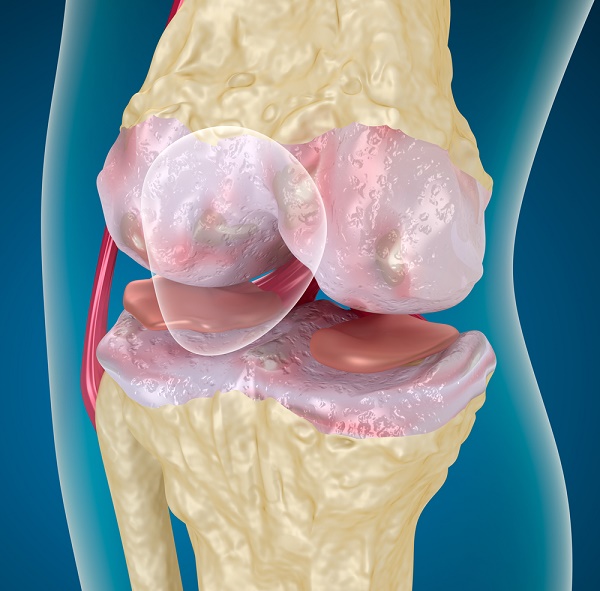What is osteoarthritis?
 Simply stated, osteoarthritis is the breakdown of the articular cartilage that covers the ends of the bones that make up your joints
Simply stated, osteoarthritis is the breakdown of the articular cartilage that covers the ends of the bones that make up your joints
What is articular cartilage and what is a joint?
Let’s start with the definition of a joint. Look at your body anywhere it bends. There is a joint located there. Examples of joints are your knees, elbows, shoulders and hips. When two long bones come together to form a joint, the ends of the long bones that form the joint are covered with a cap of protective material called articular cartilage. The cartilage protects the end of the bone and functions as a shock absorber.
When the cartilage starts to break down, it is called osteoarthritis. This process can be painful, and it may cause swelling in the joint and stiffness.
Why do people get osteoarthritis?
There are four major reasons why people get osteoarthritis. 1) The number one reason is genetics, if mom or dad had osteoarthritis you may get it too. 2) Being overweight can be a cause of osteoarthritis because the articular cartilage was designed to support the weight of a normal size person. If you are overweight, there is extra force applied to the cartilage and this can cause premature wear. 3) If there was a prior broken bone that involved the joint this can cause arthritis. 4) The last reason is old age. Yes, our bodies start to break down over time from age.
Can osteoarthritis be cured?
Once you have osteoarthritis, it cannot be reversed. It is a progressive disease and will advance with time. The rate it progresses is different for every person. For some people there is a fast progression of the disease and for others it is a slow process.
We have ways to make the condition less symptomatic. While we can’t cure the condition, we can control the signs and symptoms such as pain, swelling and stiffness.
What helps to make an arthritic joint feel better?
A number of different things may help osteoarthritic joints less painful including the following:
- Low impact exercise is great for arthritic joints and resistance weight training
- Supplements such as glucosamine can help.
- Over-the-counter and prescription anti-inflammatory medications used on an intermittent basis may provide relief.
- Cortisone injections, which is a strong, anti-inflammatory medicine injected right into the affected area. A cortisone injection can provide 3 to 6 months of pain relief.
- Hyaluronic acid injections can also provide relief for up to a year.
- There are special osteoarthritis braces that can help with symptom control.
- Joint replacement is an option only when a comprehensive course of conservative treatment has failed.
How does exercise help pain from osteoarthritis?
Low impact exercise and weightlifting help to keep the joint limber. Keeping the muscles around the knee strong help to reduce the force on knee.

Recent Comments